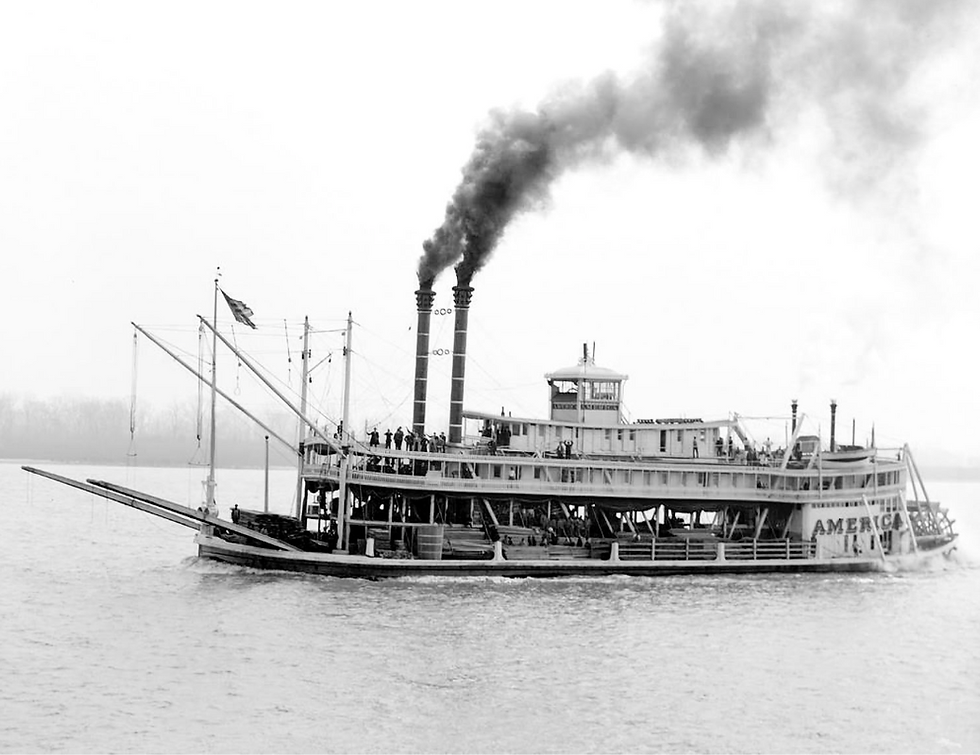The Sinking of the Arkansas Traveler Steamboat
- Ninfa O. Barnard
- Sep 24
- 2 min read
On the evening of March 21, 1860, the Arkansas Traveler, a steamboat worth over $12,000 ( approximately $468,399.04 today) and insured for $8,000 (approximately $312,266.02 today), sank at Marshal’s Cut Off, 16 miles below Pine Bluff, Arkansas, killing one passenger.

On the evening of March 21, 1860, the Arkansas Traveler, a steamboat worth over $12,000 ( approximately $468,399.04 today) and insured for $8,000 (approximately $312,266.02 today), sank at Marshal’s Cut Off, 16 miles below Pine Bluff, Arkansas. The Traveler sank heading up the Arkansas River carrying cargo that was deemed “the largest ever taken from New Orleans into [the] Arkansas River.” That night, 200 barrels of sugar, 800 sacks of salt, dry goods, and hardware were among its massive cargo.
The Traveler was a 170-ton sternwheel paddleboat owned and operated by Captain Albert Thomas and his partner James Timms (Timmons). The steamboat frequently transported both passengers and cargo between New Orleans, Louisiana, and Fort Smith, Arkansas.
According to the Memphis Avalanche, The Traveler was attempting to cross Marshal’s Cut Off when it struck a tree stump that tore an enormous hole in the bottom of the steamboat that almost extended the full length from bow to stern. The crash was so violent that the cabin was knocked loose from the hull and soon slid into the river.
The steamboat’s passengers were jolted awake in their nightclothes in the darkness, and many jumped into the river in a panic. After it was determined that the steamboat would sink, Captain Thomas “is said to have done all that a man could do under the circumstances.” He steered the Traveler toward the shore where lines had been attached to trees. Shortly thereafter, the Arkansas Traveler’s hull sank with five feet of water over its main deck, and the cabin floated away.
All of the passengers succeeded in reaching the shore that night except William Pursely of Dardanelles, Arkansas, who was seen jumping overboard earlier that night. Among the steamboat’s many passengers, Pursely was the only casualty of Traveler’s sinking.
Though the large cargo of salt and sugar was a total loss, one newspaper reported that “the remainder of the freight will be saved in a damaged condition.” On April 20, 1860, those goods were auctioned in New Orleans.
Sources:
Written by: Ninfa O. Barnard







Comments